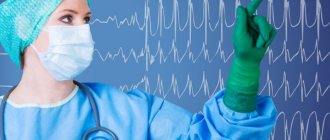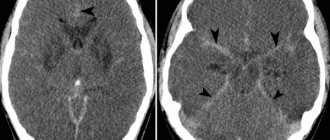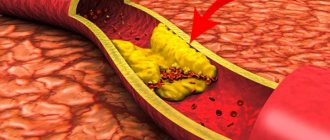Tremors are uncontrollable movements caused by involuntary muscle contractions. The symptoms most often appear in the hands and head. The causes of the disease are various conditions. In some cases, tremor is physiologically temporary. However, more often uncontrolled movements worsen the quality of life.
According to the international classification of diseases ICD-10, tremor is coded G25. Depending on the cause, the following disease codes are distinguished:
- G25.0 - essential;
- G25.1 - while taking medications;
- G25.2 - intentional;
- G25.3 - myoclonus;
- G25.4 - chorea;
- G25.5 - other types of chorea;
- G25.6 - tics due to medications;
- G25.8 - specified extrapyramidal and movement disorders;
- G25.9 - unspecified extrapyramidal and movement disorders.
You can undergo a full course of examination in Moscow to identify the causes of tremor at the Yusupov Hospital. The clinic has modern equipment that meets international standards. Doctors at the neurology clinic provide complex therapy for tremor using the most effective medications, physiotherapeutic procedures, and therapeutic exercises. Initially, neurologists establish the cause of uncontrolled movements and eliminate it. Doctors from various specialties take part in the treatment process: neurologists, rheumatologists, endocrinologists, and rehabilitation specialists. Severe cases of tremor are discussed at a meeting of the expert council with the participation of candidates and doctors of medical sciences, doctors of the highest qualification category.
Causes
Tremors in the hands and head can occur due to various reasons. The importance of identifying the etiological factor lies in the need to determine appropriate treatment. Among the main causes of tremor are:
- Osteochondrosis. Due to pinching of the spinal nerve fibers, circulatory and nutritional disorders occur. Along with tremor, swelling of the face and cardiovascular disorders often appear;
- Alcohol and drug addiction. Taking excessive amounts of alcohol or medications can cause tremors;
- History of trauma. Damage to the nerve roots due to trauma is often reflected in the form of tremors;
- Dysfunction of the central nervous system. The tremor may begin as mild twitching. As the condition worsens, the severity of the symptom increases;
- Psycho-emotional experience. Most often, tremors due to stress occur in infants. This is a variant of the norm if the symptom appears sporadically.
- Excessive mental stress. Worries teenagers or students during exam periods. If severe headache, loss of coordination, aggression or apathy appear along with tremor, you should consult a doctor;
- Degenerative changes in the brain. Diseases such as Parkinson's disease and dementia can be accompanied by tremors. You can control the severity of symptoms with the help of medications that are selected by your doctor.
Diseases that cause trembling of the limbs
There are various diseases, the presence of which can lead to tremor. Among them are:
- Endocrine pathology: hyperparathyroidism, thyrotoxicosis, pheochromocytoma, hypoglycemia;
- Strokes of various origins;
- Infectious diseases: encephalitis, neurosyphilis;
- Metabolic disorders: Wilson-Konovalov, Hallervorden-Spatz disease;
- Tumors: angiomas, cancer, hematomas;
- Polyneuropathy of various origins.
- Neurological pathology: multiple sclerosis, encephalopathy, cerebral palsy, Alzheimer's disease, Parkinson's disease, Pick's disease, Huntington's chorea, cerebellar degeneration.
In most cases, tremor is a symptom of Parkinson's disease. There is an opinion that this is a problem for older people (previously this was considered the norm). But essential tremor (also called “hereditary”) now occurs in young people, and the proportion of such cases reaches 20%. Parkinsonism ranks second among neurodegenerative diseases. It is second only to Alzheimer's disease. 8 out of 10 cases of Parkinson's disease develop unnoticed and usually manifest themselves only in disturbances in motor activity: rigidity or increased muscle tone, stiffness of movement.
Tremors are not always associated with Parkinson's disease. It often occurs in the case of autoimmune processes or dysfunctions of the central nervous system, endocrine disorders, and may be a consequence of taking medications. Neurologists use the latest laboratory and instrumental studies to determine the cause of tremor. If tremor is caused by disturbances in the functioning of the central nervous system, then it cannot be treated, but modern drugs significantly reduce the manifestations of the disease and improve the patient’s quality of life.
Tremor as a hereditary disease
Essential tremor is one of the types of pathological forms of tremors. The development of essential tremor is associated with the mutation of certain genes. The disease is inherited in an autosomal dominant manner, so the likelihood of developing tremor in women and men is the same.
The main feature of essential tremor is the high risk of developing the disease in the patient’s children and grandchildren. In this case, signs of the disease begin to be observed at an early age. A gene mutation that has not previously appeared in a family may occur spontaneously in one of the members. In this case, a sporadic form of the disease develops.
If a patient comes to the Yusupov Hospital with complaints of body tremor, the causes of the disorder are established during an examination by a neurologist and highly informative studies.
Make an appointment
Causes of internal tremor
Internal tremors in the body are a common phenomenon that can be caused by a sharp drop in temperature. The development of internal tremor occurs as a result of the production of hormones in a stressful situation for the body. These hormones help overcome unpleasant conditions, but they may not be fully used. A short tremor that occurs as a result of an excess of hormones in the body does not pose a danger to human health.
Severe body tremors may indicate the development of a pathological process in the body. Tremor brings discomfort to a person; in most cases, it is difficult to cope with pathological tremor on your own. Experienced specialists at the Yusupov Hospital determine why the whole body tremor developed in this patient using modern diagnostic equipment. Neurologists at the Yusupov Hospital help patients stabilize their nervous system and improve their quality of life using the achievements of modern medicine.
Expert opinion
Author: Georgy Romanovich Popov
Neurologist, Candidate of Medical Sciences
Almost every person has experienced tremors, for example, when being in the cold or before an exciting event. If the tremor does not stop for a long time, you need to be examined. Usually it is a symptom of Parkinson’s disease and is considered to be a problem for older people (it used to be the norm), but if we talk about essential tremor (also called “hereditary”), now it also occurs in young people, and the proportion of such cases reaches 20%.
Parkinson's is in second place among neurodegenerative diseases, second only to Alzheimer's disease. 8 out of 10 cases of Parkinson's disease develop unnoticed and usually manifest themselves only in disturbances in motor activity: muscle rigidity or hypertonicity, stiffness of movement.
Tremor is not always associated with Parkinson's disease; it can often indicate serious autoimmune processes or disorders of the central nervous system, endocrinological disorders, or side effects from taking medications. In any case, you need to undergo an examination and first of all check the brain using MRI, CT, and EEG.
If tremor is caused by disturbances in the functioning of the central nervous system, then it cannot be treated, but modern drugs significantly reduce its manifestations and improve the patient’s quality of life.
Tactics for tremor
Patients often ask what effective treatments are available for tremors of the head, arms or legs. But tremor cannot be treated; its cause (the disease that accompanies it) must be addressed.
Tremor can have different origins. Therefore, if a patient has this pathology, he should contact a therapist, who, after conducting an examination, will give recommendations on which doctor should be contacted next - a neurologist, endocrinologist, infectious disease specialist or other specialized specialists.
Often, to find out the cause of tremor, the patient must undergo many examinations of different organs and systems. Also, in a number of clinical cases, a patient with tremor is treated by several doctors of related specialties (for example, for diabetic neuropathy, treatment will be prescribed jointly by an endocrinologist and a neurologist).
Recommendations on how to treat essential tremor in a child should be given by a highly qualified neonatologist.
Related services: Consultation with a neurologist Why fingers and toes go numb
Degrees
Determination of the degree of tremor is required to establish the severity of the disease. Based on this criterion, the need to prescribe one or another therapy is judged. Tremor is divided into:
- Minor. Rare attacks that recur at regular intervals. The symptom does not affect the patient's quality of life.
- Moderate. Tremor prevents small movements. In this regard, the quality of life and ability to work decreases.
- Significant. A pronounced pathological symptom is the cause of disability. The patient cannot care for himself due to lack of control over movements.
Reason to see a doctor
Many parents are afraid to contact a neurologist: supposedly, a visit to a specialist automatically “puts” the child on the sick list; and avoid making an accurate diagnosis in every possible way. This attitude should be reconsidered, since periodic visits to the doctor are also recommended for healthy children. Even if the child exhibits symptoms that require monitoring, a final diagnosis is made only if the clinical picture persists or worsens. In addition, a working temporary diagnosis can always be removed when the symptoms subside. However, there are marker signs when a visit to the doctor cannot be postponed:
- the baby’s lips and chin shake regularly, and these actions cannot be explained by external causes;
- rhythmic twitching, reminiscent of “nodding” the head;
- tremor of the chin alternates with tension and stretching of the neck (the child seems to be tonically straining), and after these events the child cries as if he is in pain;
- trembling affects the neck, causing head twitching;
- episodes of tremor occur sporadically (in attacks), after which the child’s body becomes limp or he does not react for some time to the surrounding reality;
- the baby has increased sweating;
- certain areas of the skin turn blue (most often the area around the mouth);
- there is a mention in the child’s history of childbirth accompanied by hypoxia (intrapartum fetal hypoxia);
- as the child grows up, the symptoms do not weaken, but intensify;
- trembling of the chin and limbs is present in a child older than one year.
Varieties
Tremors are classified according to causes and symptoms. In accordance with this, the following forms of pathology are distinguished:
- Essential. Most often it is hereditary. It is considered a benign symptom. Occurs in people over 60 years of age. The causes of essential tremor are not fully understood.
- Rest tremor. Characteristic of Parkinson's disease. Tremor appears in the hands, rarely in the legs, chin, and lip. This type of pathology is characterized by unilateral damage.
- Mesencephalic. Combined type of tremor. Occurs as a result of stroke, traumatic brain injury, tumor formations in the skull, multiple sclerosis.
- Psychogenic. The provoking factor for the appearance of this type of tremor is stress. The severity of the symptom depends on the strength of psycho-emotional stress.
Main manifestations
Localization of tic movements most often occurs in the facial or neck muscles. Over time, they can spread from top to bottom. The most common examples of simple childhood motor tics are:
- frowning;
- blinking;
- squinting;
- moving the wings of the nose;
- drawing in air through the nose;
- twitching of the corner of the mouth;
- turning or tilting the head;
- shrug;
- flinching;
- twitching of limbs;
- flexion or extension of fingers;
- snapping fingers.
Vocal tics are manifested by coughing, throat sounds, sniffling, spoken syllables or exclamations. This is a meaningless sound that interferes with speech and gives the impression of stuttering or stuttering. If no measures are taken to eliminate them, the situation will only get worse. Tic movements also progress and reach a new level in the form of:
- grimace;
- head tossing;
- touching various parts of the body with hands;
- contractions of the abdominal muscles or diaphragm;
- squats;
- bouncing.
All of the above nervous tics in children are not all manifestations of the disease. They can be individual and atypical. It all depends on the child’s level of development, his character and temperament, sensitivity to environmental stimuli and a number of other reasons.
Diagnostics
The sooner the study is carried out, the faster the causes of tremor can be established. Doctors at the Yusupov Hospital conduct a full range of examinations necessary to diagnose tremor. New equipment allows you to quickly and effectively determine the causes of the disease and conduct a course of appropriate therapy. According to international recommendations, to identify the etiological factor of tremor, the following examinations are required:
- CT. Thanks to the study, it is possible to identify pathological foci in the brain.
- Positron emission tomography. Allows you to assess the functional ability of the parts of the brain responsible for coordination of movements.
- MRI. Informative research method. Allows you to identify changes in the structure of the brain at the initial stages.
- Electroencephalography. A research method based on recording the bioelectrical activity of the brain.
- Electromyography. A study prescribed to determine the functional capacity of the neuromuscular system.
The scope of diagnostic measures is determined individually. It depends on the severity of the condition, the age of the patient and the presence of concomitant diseases.
Trembling of the chin in a newborn is a physiological norm
Tremor caused by immaturity of the nervous system is considered a physiological norm. When a child cries and his chin trembles, it is enough to simply calm the baby. In newborns, such conditions are not treated. 3 months will pass and all phenomena will disappear. Don't worry if you notice your chin shaking while breastfeeding, bathing, or changing clothes. With any load on the nervous system, the baby begins to twitch. Trembling can be caused by:
- Overwork.
- Fright.
- Paradoxical (rapid eye movement) sleep.
- Hunger.
- Painful sensations.
- Uncomfortable air temperature.
- Bright lights and loud sounds.
- Sudden change in body position.
For obvious reasons, when the mother understands what is causing the trembling of the chin, there is no need to worry. If twitching is observed in other situations, occurs for no reason and in complete rest, the child should be examined by a doctor.
What to do if your newborn’s hands are shaking?
In order to quickly cope with problems, you need to follow a number of simple rules.
What to do if your newborn’s hands are shaking:
- First, before going to bed, be sure to bathe your baby in slightly warm water with the addition of motherwort and valerian tinctures. These baths are very calming and normalize sleep. Some pediatricians recommend adding a couple of drops of lavender oil to bathing water. There is no need for the smell to be very strong, just a faint scent is enough to calm the child.
- Be sure to give your baby a massage. This is not necessarily a special complex; light stroking and more intense movements are enough. You need to learn several simple techniques, including stroking, tapping, and kneading.
- Below in the video you can see how to massage newborns. Any massage leads to normalization of muscle tone, so spasms will occur much less frequently. Be sure to feed your baby at the same time and teach him a certain routine. Try to go for walks at the same time and put your child to bed at certain hours. This will help normalize the functioning of the nervous impulse system. Thus, the baby gets used to this daily routine, and situations that may disturb his nerves will disappear.











